Bee's World: Asian hornet, a predator of bees
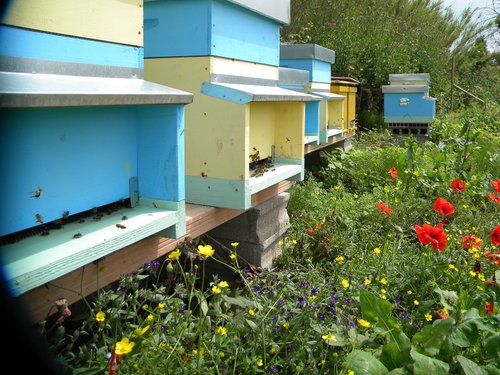
Proprietary Image
Let’s start with the Asian Hornet (Vespa velutina nigrithorax) and proceed with the Beetle Hives (Aethina Tumida), a predator who is seriously putting the bee’s survival at stake, in particular in the Calabria and Sicilia’s regions. The Asian Hornet is a Vespa Velutina that feeds with bees: once it catches bees, it breaks them in half while alive, removes the external surfaces and eats thorax muscles. It’s an extremely aggressive species compared to the European Hornet (Vespa Crabro). The main difference with the European species is that the Asian Hornet is really smaller, about 3 cm long. It’s colour ranges from dark brown to black, with an orange bottom. The head’s area has a yellow to orange color. Its wings are really long, about 5 cm, and its legs are dark with yellow tarsi. His sting injects a venom which is as toxic as the European Hornet.
Avoiding bites it’s always recommended, given that, if allergic, life can be threatened.
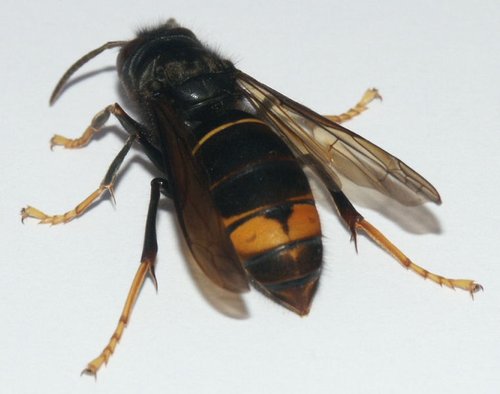
The Asian Hornet - CC0 Creative Commons
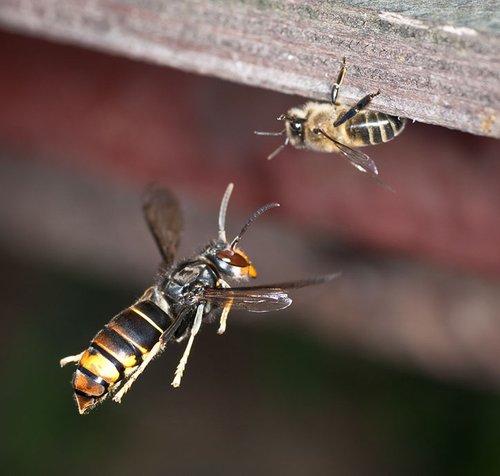
An attack from the Asian Hornet - CC0 Creative Commons
Public institutions, universities and bees’ associations have gathered to try to limit the expansion of the Asian Hornet and to eradicate this insect at all, given the damage cause to the honey harvesting. The first aim as a countermeasure is to locate each nest and destroy it before the Queen bee is fecundated. Those nests are really difficult to spot, given their position; they are based not only on the high ground, but also in the lower ground, near bushes and roofs of populated areas. Since the surge of the Asian Hornet, various solutions have been studied. In France researchers have been studying a “parasite hornet” that can neutralize the Asian one; meanwhile the most effective weapon has been a carnivorous plant from North America, the Sarracenia.
This plant has tubular leaves that lead to a funnel structure. Insects are attracted with a nectar secretion and scents that it releases, pushed further down in the tubular structure. Once there, they can’t break free anymore due to a waxy hides and eventually digested from the plant with the use of special enzymes. The european variant of the Sarracena has been proved to be extremely selective. In the botanical garden of Nantes, in the Loire valley, it has been proved that only the Asian Hornet falls in the trap, meaning that european bees and wasps could be safe.
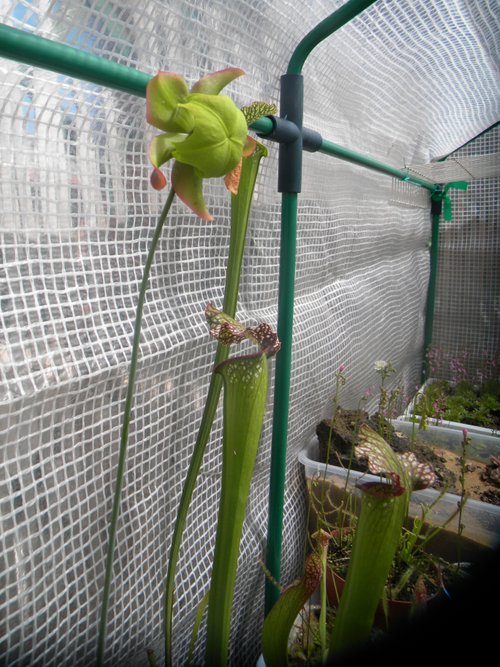
Flourish Serracena, property of mine
Currently there is a study regarding the chemicals produced from the Serracena that attract the Asian Hornet. In Italy, the Council for the research in agriculture CRA API of Bologna has been perfectioning a system that enables to install a small antenna on the hornet, with the aim of spotting the nest and destroying it. A similar project has been worked on by the Liguria Region alongside the Turin’s Polytechnic. This year will be released the first radar that allows to keep track of flying hornets. Last but not least, a “trapping” system has been set up.
This is a 2-step process: a first trap has to be positioned in the end of winter, when the hornet’s queen gets out from nest to search for sugary nutrients to ultimately fly in other areas and create new colonies. The bait is formed of a 4.7% alcohol beer which is not hurting bees and other insects, given that they do not like that mixture.
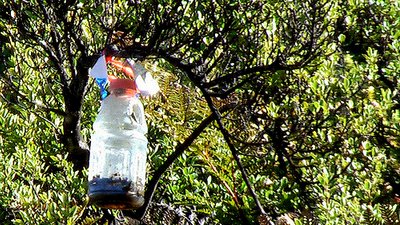
An example of the trap - CC0 Creative Commons
The trap can be made simply: beer is poured in a plastic bottle and a red or yellow cap, which reminds of mature fruits, is set on trees. It’s an evolution of an old farmer custom, which really works!
The second trap has to be set in summertime, when more hornets fly near the beehive, from sunset to sunrise. In summer the hornet’s habits change: in fact the working hornets are the one in search of nutrients to feed the maggots. This second trap is called “sphere trap”, a glue bait made with fish patè for cats, positioned upon or in between the beehives. Starting from a small sphere, like a little football ball, a small transparent film has to be positioned, covered with mice’s glue. After that, cats’ patè has to be spread on.
The result is that the Asian hornet, attracted from the food, flies on the sphere and get stuck.
What’s incredibile is that all those baits are the result of the mind of beekeepers who are left alone fighting against predators, not only to defend the Apis Mellifera Ligustica, but also to preserve our ecosystem, where we live.
Next time we will talk about the famous hive beetle: Aethina Tumida!
Fonti


Complimenti! Ad entrambi!
Grazie @pawpawpaw!
E bel nickname 😁
Grazie tanto @pawpawpaw!!
le api sono fondamentali per l'impollinatura mondiale! bravo!
:)